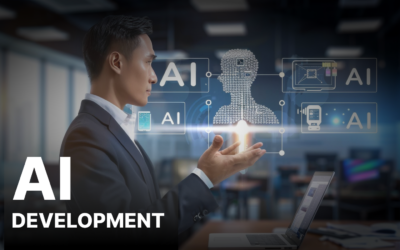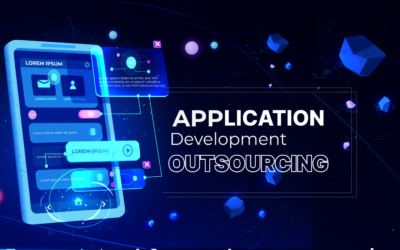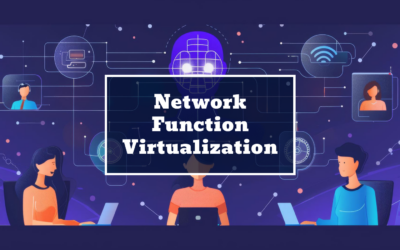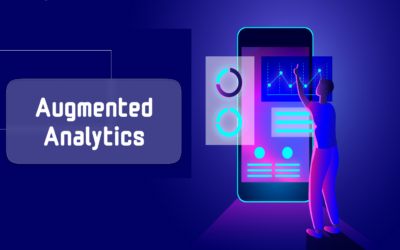Top 7 Data Visualization Trends & Tools for 2024
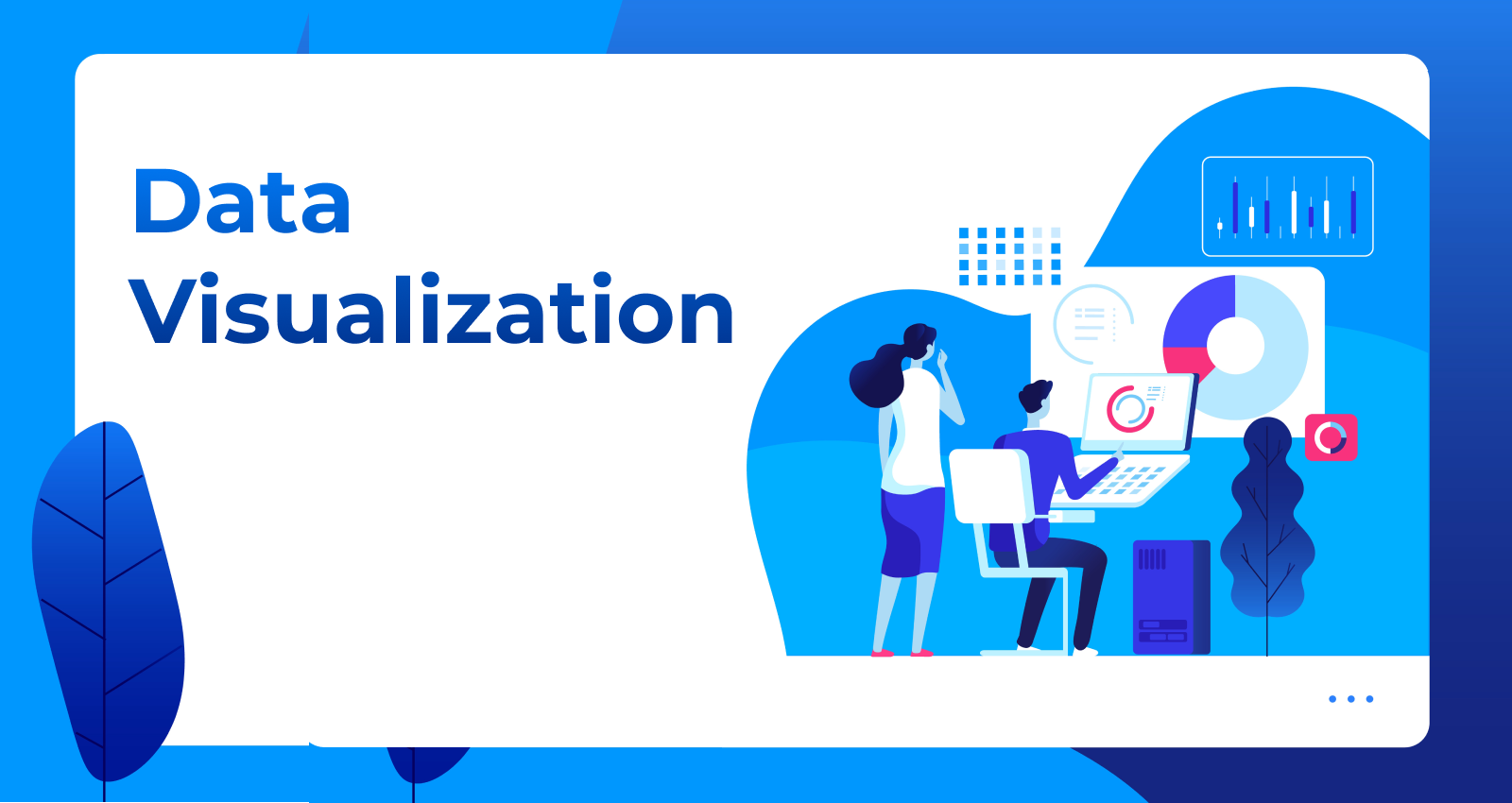
Introduction
In the fast-paced digital landscape, data has become the cornerstone of decision-making for businesses across the globe. However, raw data alone cannot provide the insights needed to drive effective strategies.
Tableau says that managers in companies using visual data tools are 28% more likely to find information on time compared to those who use reports and dashboards. Also, these insights can reveal new business opportunities.
Because it’s becoming more important, more businesses are using data visualization. New tools and features are being introduced frequently. Data scientists and analysts use these tools to get more insights and value from the data they have.
Enter data visualization – a powerful tool that transforms complex data into comprehensible visuals. In this blog, we’ll explore the top seven data visualization trends and the tools reshaping how we understand and utilize data.
What is Data Visualization?
Data visualization is the process of representing data in a graphical or pictorial format, making it easier to grasp complex concepts and identify trends. Imagine a spreadsheet full of numbers – data visualization turns this into interactive charts, graphs, and maps, providing a visual story that anyone can understand.
For Example; For instance, consider a sales report containing rows and columns of sales figures. By creating a bar chart showcasing sales performance over time, it becomes instantly clear which months were the most profitable and where improvements are needed.
Why is Data Visualization Important?
Data visualization is paramount because it enhances comprehension, facilitates decision-making, and unveils hidden insights within data sets. By transforming raw data into intuitive charts, graphs, and maps, data visualization simplifies complex information, making it accessible to a wider audience. This visual representation enables stakeholders to identify patterns, trends, and outliers briefly, empowering them to make informed decisions swiftly. Moreover, data visualization fosters effective communication of insights across diverse teams and departments, facilitating collaboration and alignment towards common objectives.
In today’s data-driven landscape, where information overload is a constant challenge, data visualization serves as a powerful tool for distilling vast amounts of data into actionable intelligence, driving innovation and competitive advantage. Embracing data visualization ensures organizations stay agile and responsive in navigating the complexities of the modern business environment.
7 Data Visualization Trends
Data Beyond Visuals: This trend marks a departure from traditional visualizations by incorporating additional sensory inputs like sound, touch, and even smell. By engaging multiple senses, data becomes more immersive and accessible, enhancing user experience and understanding. This evolution allows for richer storytelling and deeper insights, particularly in fields such as virtual reality and augmented reality.
Data Viz is More Social: With the proliferation of social media platforms, data visualization is becoming increasingly interactive and shareable. Users can now engage with visual data in real time, fostering collaboration and knowledge sharing on a global scale. This trend democratizes access to data insights, empowering individuals and communities to participate in data-driven conversations and decision-making processes.
Data Democratization: Data democratization refers to the movement towards making data accessible to non-technical users through user-friendly visualization tools. This trend aims to empower individuals across organizations to create and interpret visualizations, democratizing access to data insights and fostering a data-driven culture.
Data Storytelling: Data storytelling involves presenting data in a narrative format to communicate insights effectively. By weaving data into compelling stories, organizations can engage stakeholders on an emotional level, driving understanding and action. This trend emphasizes the importance of context and narrative structure in conveying data insights.
Data Journalism is Going Mainstream: Journalists are increasingly using data visualization to enhance storytelling and present complex information in a digestible format. This trend underscores the role of data visualization in fostering transparency and accountability in journalism, as well as its potential to drive social change through data-driven storytelling.
Artificial Intelligence: AI-powered data visualization tools are revolutionizing data analysis by automating insights, predicting trends, and providing personalized recommendations. This trend enables organizations to leverage AI algorithms to extract meaningful insights from data quickly and accurately, driving efficiency and innovation in decision-making processes.
Mobile-Friendly Data: With the widespread use of mobile devices, data visualization is adapting to smaller screens to ensure accessibility and usability on the go. This trend emphasizes the importance of responsive design and intuitive interfaces in delivering data insights to users anytime, anywhere. Mobile-friendly data visualization enables organizations to reach a broader audience and empower users with data-driven insights on their mobile devices.
5 Top Data Visualization Tools
Tableau: Tableau is renowned for its user-friendly interface and powerful analytics capabilities. It allows users to create interactive visualizations and dashboards from various data sources with ease. Its drag-and-drop functionality enables users to explore data dynamically, uncovering insights in real-time. Tableau’s robust features include data blending, predictive analytics, and collaboration tools, making it a preferred choice for businesses of all sizes.
Qlik Sense: Qlik Sense offers self-service analytics and augmented intelligence, empowering users to explore and visualize data intuitively. Its associative engine allows for flexible data exploration, enabling users to discover hidden insights effortlessly. Qlik Sense’s scalable architecture supports collaborative analytics, allowing teams to create and share interactive dashboards securely. With its AI-driven insights and customizable visualizations, Qlik Sense enables organizations to make data-driven decisions with confidence.
Microsoft Power BI: Integrated with Microsoft’s ecosystem, Power BI provides seamless integration with familiar tools like Excel and Azure, streamlining data visualization and analysis. Its intuitive interface and extensive library of pre-built visualizations enable users to create dynamic dashboards and reports quickly. Power BI’s real-time analytics and AI-powered features, such as natural language processing, empower users to derive actionable insights from data effortlessly.
Sisense: Sisense’s scalable platform allows organizations to unify disparate data sources and create interactive dashboards with ease. Its proprietary In-Chip® engine enables fast data processing, even with large datasets, ensuring timely insights. Sisense’s AI-driven analytics and embedded BI capabilities enable organizations to embed analytics seamlessly into their applications, providing value to customers and stakeholders alike.
SAP Lumira: SAP Lumira empowers users to visualize and analyze data from multiple sources, leveraging advanced predictive capabilities and integration with SAP’s suite of business solutions. Its intuitive interface and drag-and-drop functionality enable users to create stunning visualizations and stories without the need for extensive technical expertise. With its real-time data connectivity and mobile-friendly design, SAP Lumira ensures that insights are accessible anytime, anywhere, empowering organizations to make data-driven decisions on the go.
What is the Future of Data Visualization?
The future of data visualization is poised to be transformative, driven by advancements in technology and evolving user expectations. As data continues to grow in volume and complexity, the demand for more sophisticated visualization techniques will increase. Emerging trends such as immersive data experiences, augmented reality (AR), and virtual reality (VR) are likely to revolutionize how we interact with data, providing deeper insights and enhancing user engagement.
Additionally, the integration of artificial intelligence (AI) and machine learning (ML) algorithms will enable automated data analysis and predictive visualization, empowering users to uncover actionable insights more efficiently. Furthermore, data democratization efforts will continue to expand, making visualization tools more accessible to non-technical users, thereby fostering a culture of data-driven decision-making across organizations.
Overall, the future of data visualization holds promise for greater innovation, accessibility, and effectiveness in leveraging data to drive informed decisions and shape the trajectory of businesses and industries.
Conclusion
Data visualization continues to evolve, reshaping how we perceive and leverage data to drive business outcomes. By embracing emerging trends and leveraging innovative tools, organizations can unlock the full potential of their data, gaining valuable insights that drive growth and innovation in the digital age. Explore these trends and tools to transform your data into actionable intelligence and stay ahead in today’s competitive landscape.
Are you looking for any IT Services such as Software Testing, Web design and Development, Professional/Staff Augmentation Services, Cloud Computing, Mobile App Development, Digital Marketing Services and more? Connect Stridefuture Technology, which helps to meet your requirements.
{Stridefuture Technology, a full-service company specializing in Software Solutions and Consultancy services. We specialize in Personal, Business, IT Services, Software Testing, Web design and Development, Mobile App Development, Digital Marketing Services, and much more you can dream Virtually with us! Reach out for more service at Stridefuture Technology.}



